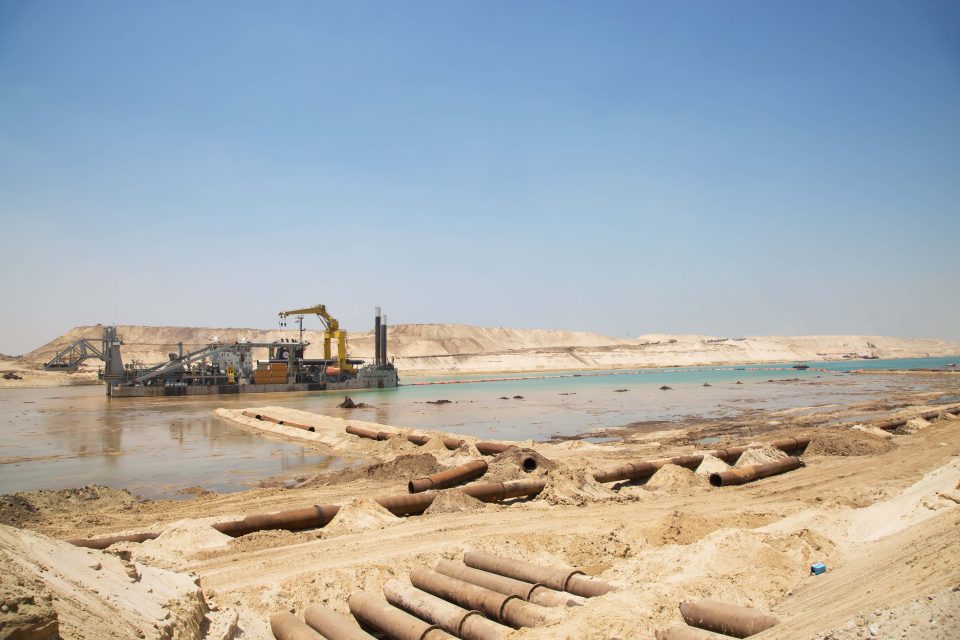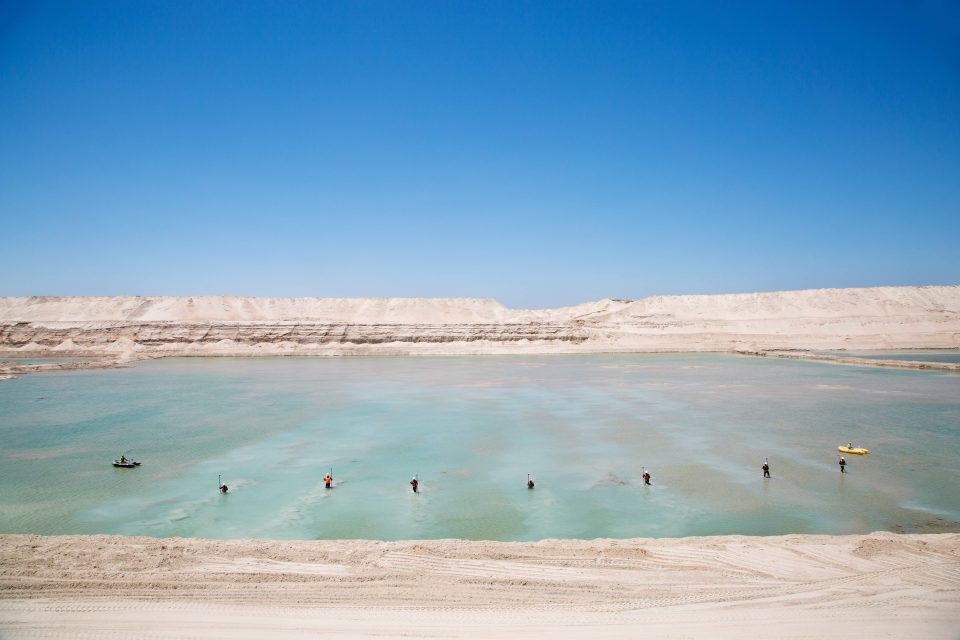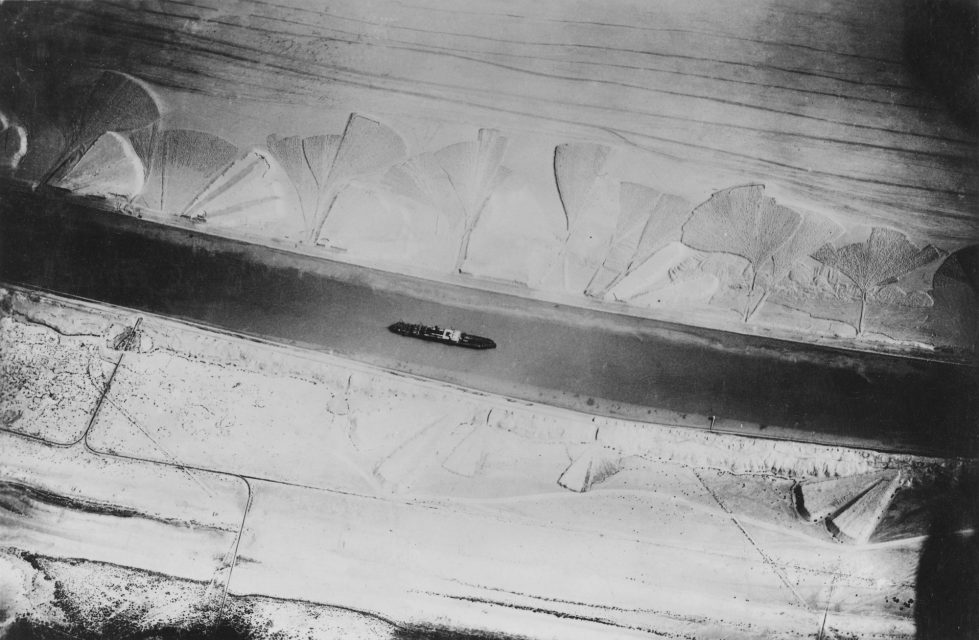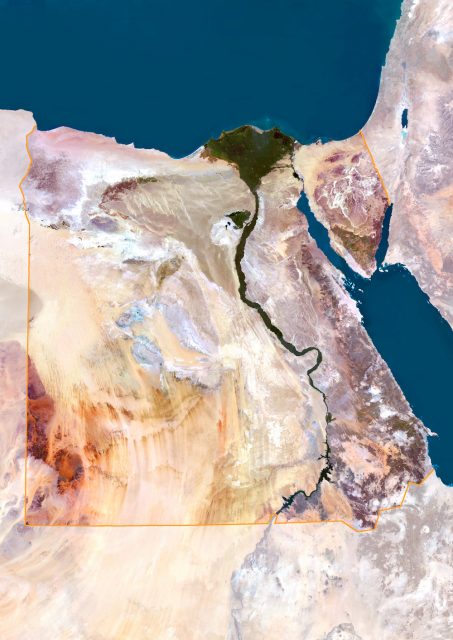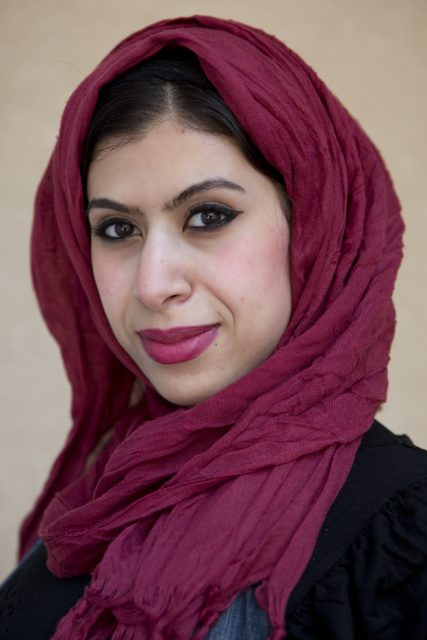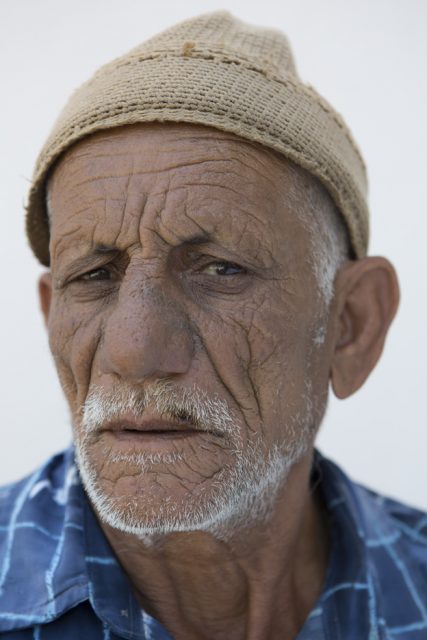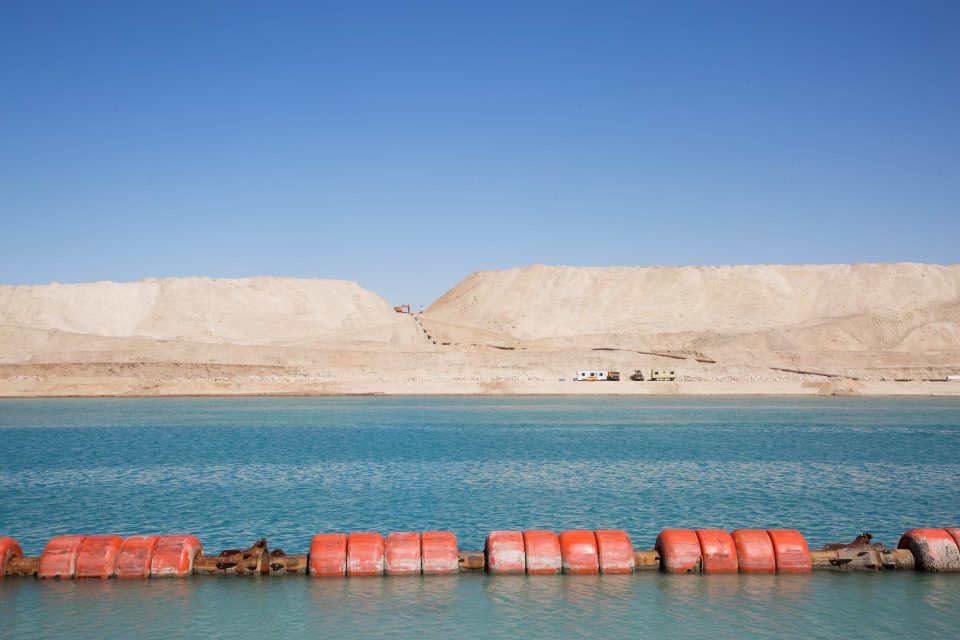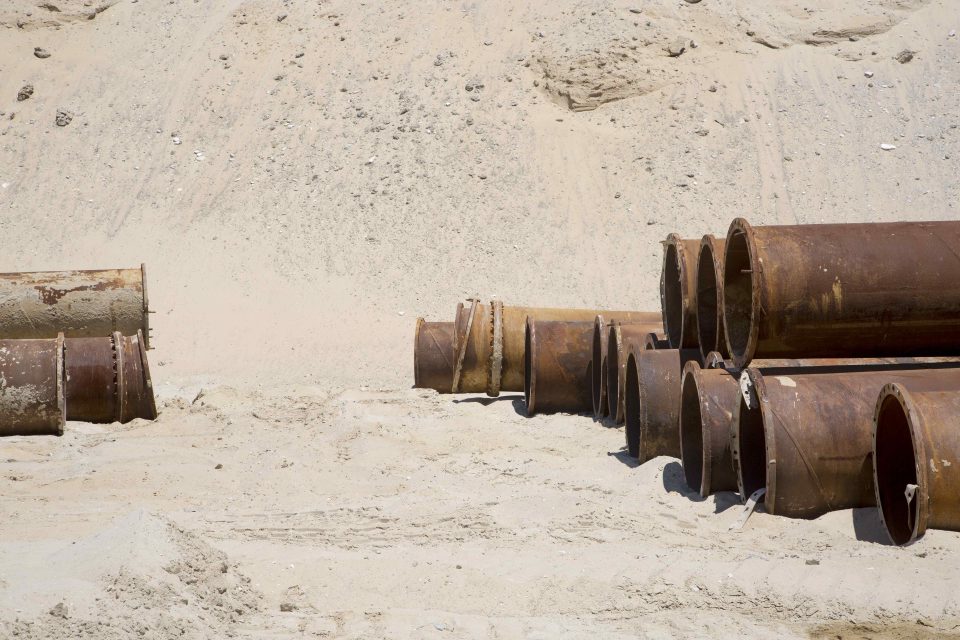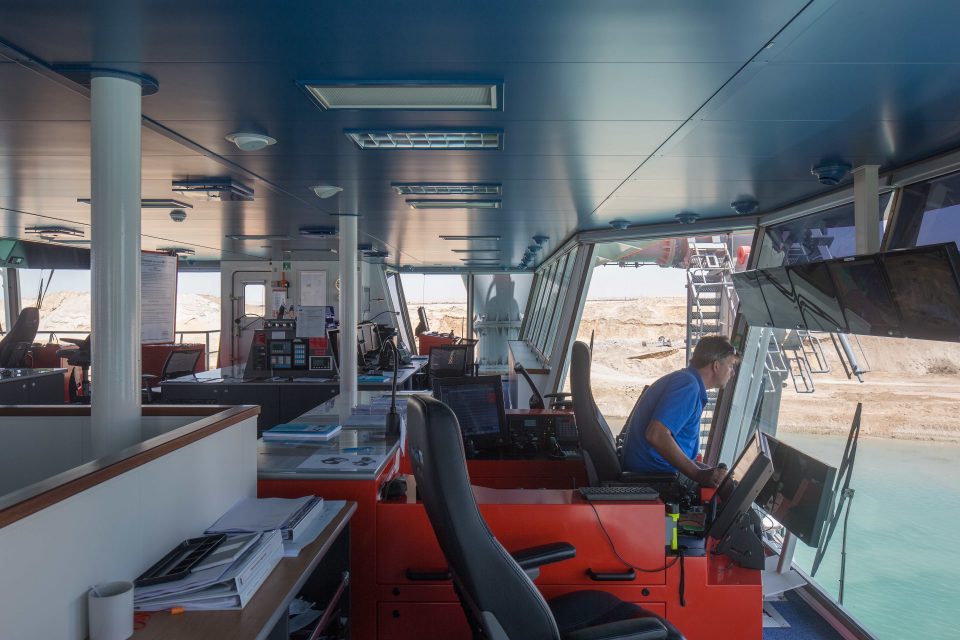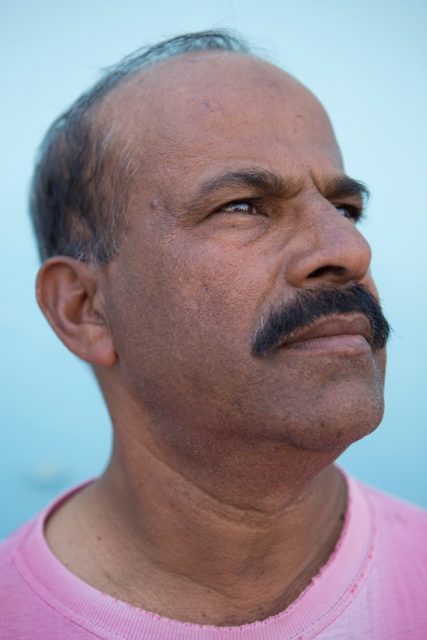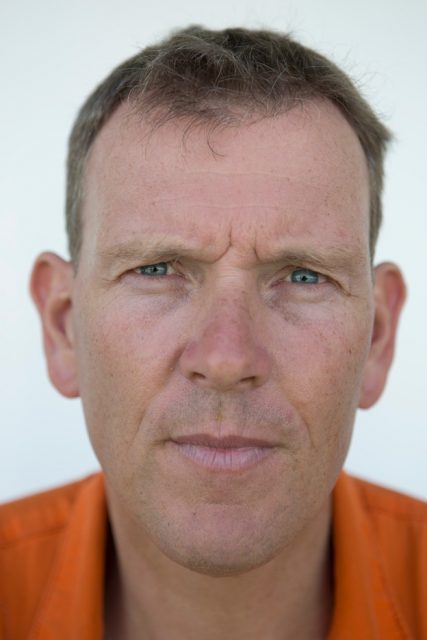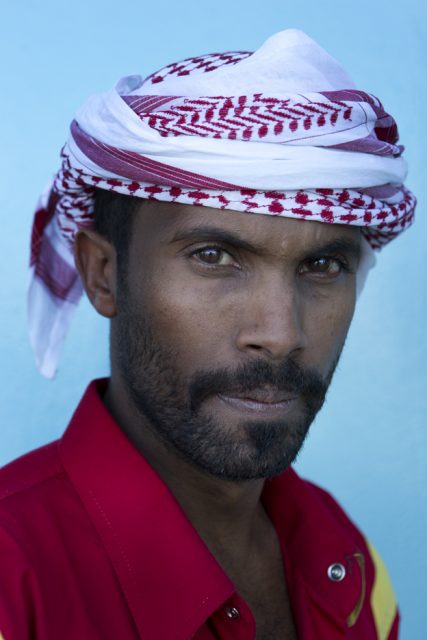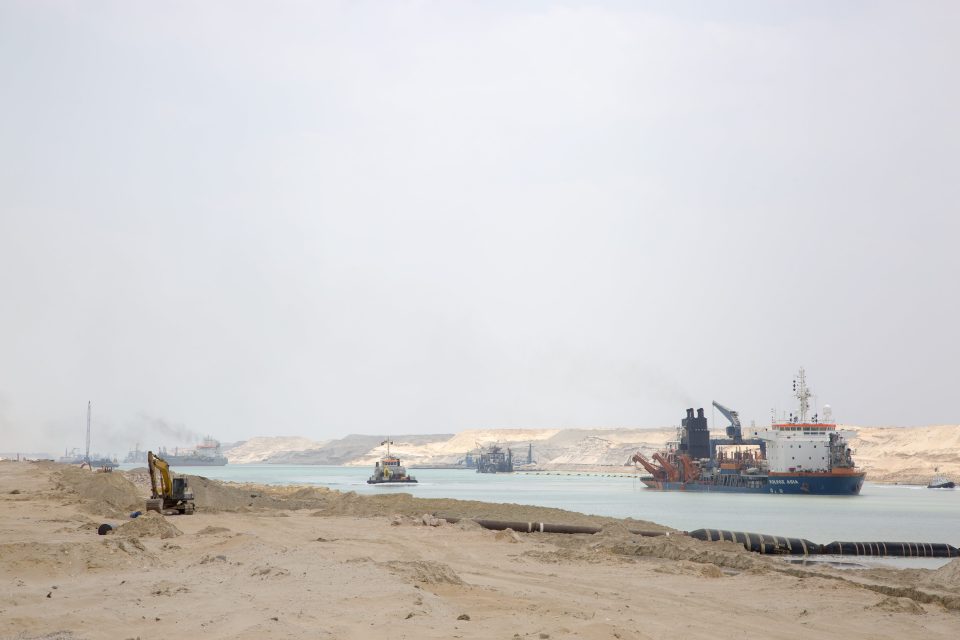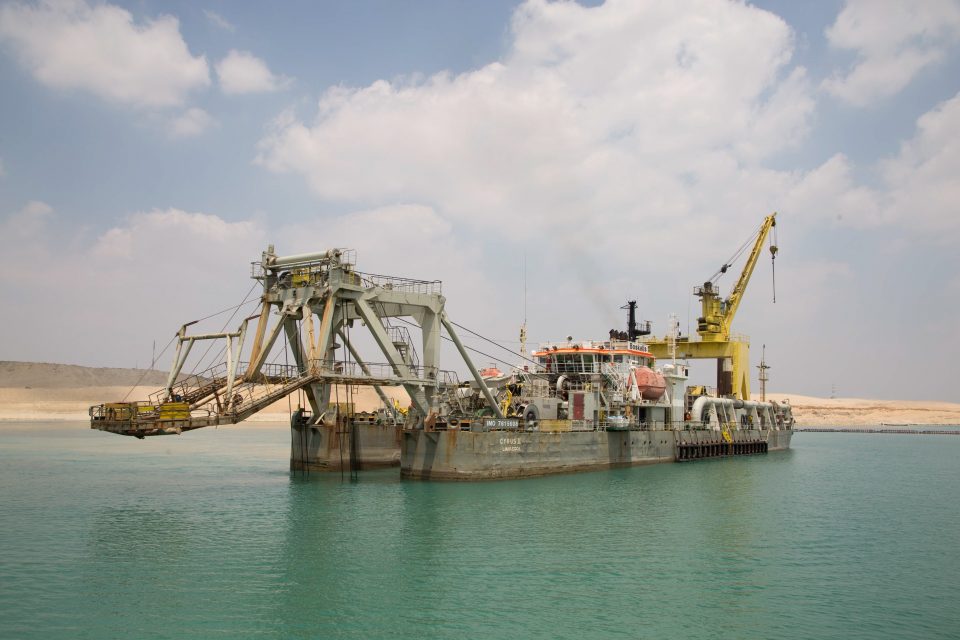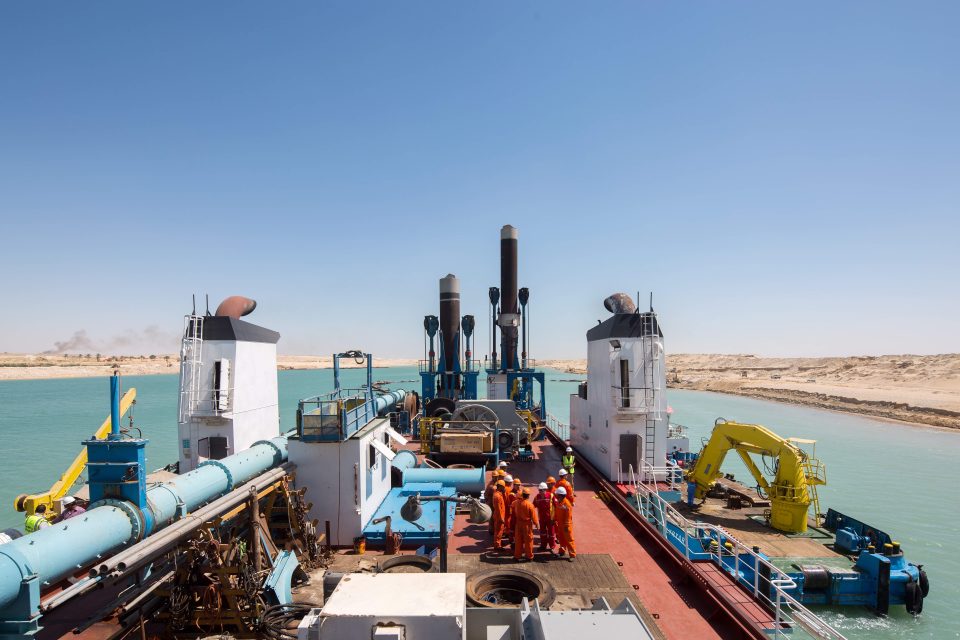August 6 2015 was a historic moment for Egypt. President Abdel Fattah el-Sisi inaugurated the New Suez Canal; a major expansion that deepens the main waterway and provides ships with a 35km channel parallel to it. Recognising the historical importance, Paradox approached the international consortium that carried out the majority of the job, to commission two Dutch photographers to document the construction of the canal and turn it into a book.
The Suez Canal is one of the most heavily used shipping lanes, which connects the Red Sea with the Mediterranean Sea through Egypt. The canal allows ships to travel between Asia and Europe without having to take the long route around southern Africa, reducing the distance by up to 10,000 nautical miles (18,500 kilometres).
The plan to expand the Suez Canal by dredging an additional lane that allows the transit of ships in both directions had been prepared under the short reign of president Morsi and was to take – an already ambitious – 3 years. On 5 August 2014, president el-Sisi unveiled the plans that had been entirely financed by the Egyptian public, plus the fact that the whole job would be ready exactly one year later. A clear example of political power play, meant to be a sign of taking control by the military regime over the Egyptian society after a period of political turmoil.
A international consortium – consisting of NMDC (United Arab Emirates), Royal Boskalis Westminster (The Netherlands), Van Oord (The Netherlands) and Jan De Nul NV (Belgium) – were contracted to carry out the construction of the New Suez Canal. Running against a tight deadline, the expansion of the canal had to be executed by the consortium as a whole. This required the contacted companies to work together and collectively tackle the immense logistical and technical operation. More than 200 million m3 of sand were dredged by the consortium during the 9 months they had to complete the project. At peak production it equalled the payload of 110,000 trucks per day.
Landscape and architecture photographer Luuk Kramer, and portrait photographer Ringel Goslinga worked in Egypt in May and early June 2015 to record the construction as well as the people behind it. The work was carried out by 2,000 people from 45 nationalities, working ashore or on board of the 28 vessels that were deployed. Without the presence of both photographers the construction of the new canal, some 150 years after the initial construction by De Lesseps, would have remained almost invisible as only few photographers were allowed to work in the highly sensitive economic and military area bordering the Sinai desert.
The resulting photographs have been published in The New Suez Canal – A challenge in time, a photobook made in commission for the consortium partners.
Book
In 2015 Paradox approached the international consortium that carried out the majority of the job, to commission two Dutch photographers to document the construction of the canal and turn it into a book. The resulting photographs have been published in The New Suez Canal – A challenge in time. While the printed version of the book – designed by Kummer & Herrman – is not for sale, the publication can be viewed on our website. A special, exclusive edition of the book (10 copies) was available at Unseen Bookmarket.
Buy